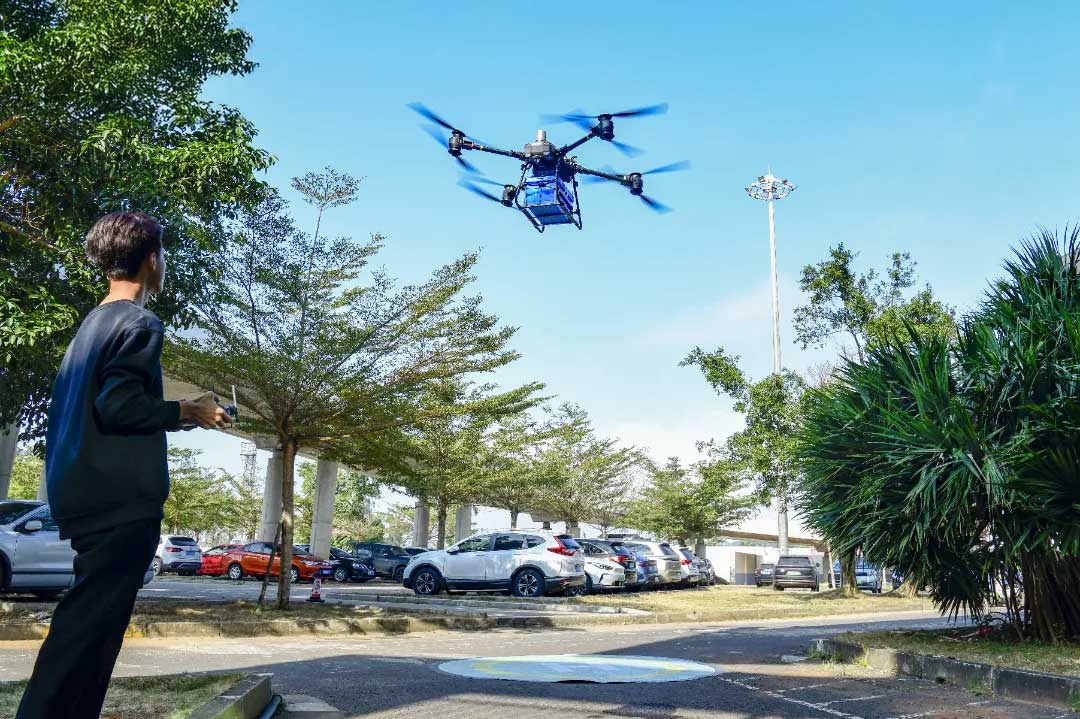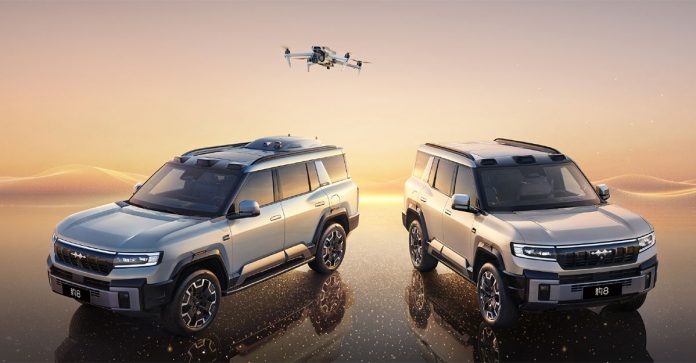BYD, a leading Chinese electric vehicle (EV) manufacturer, has partnered with DJI, the global leader in drone technology, to unveil the world’s first vehicle-mounted drone system, named “Lingyuan.”
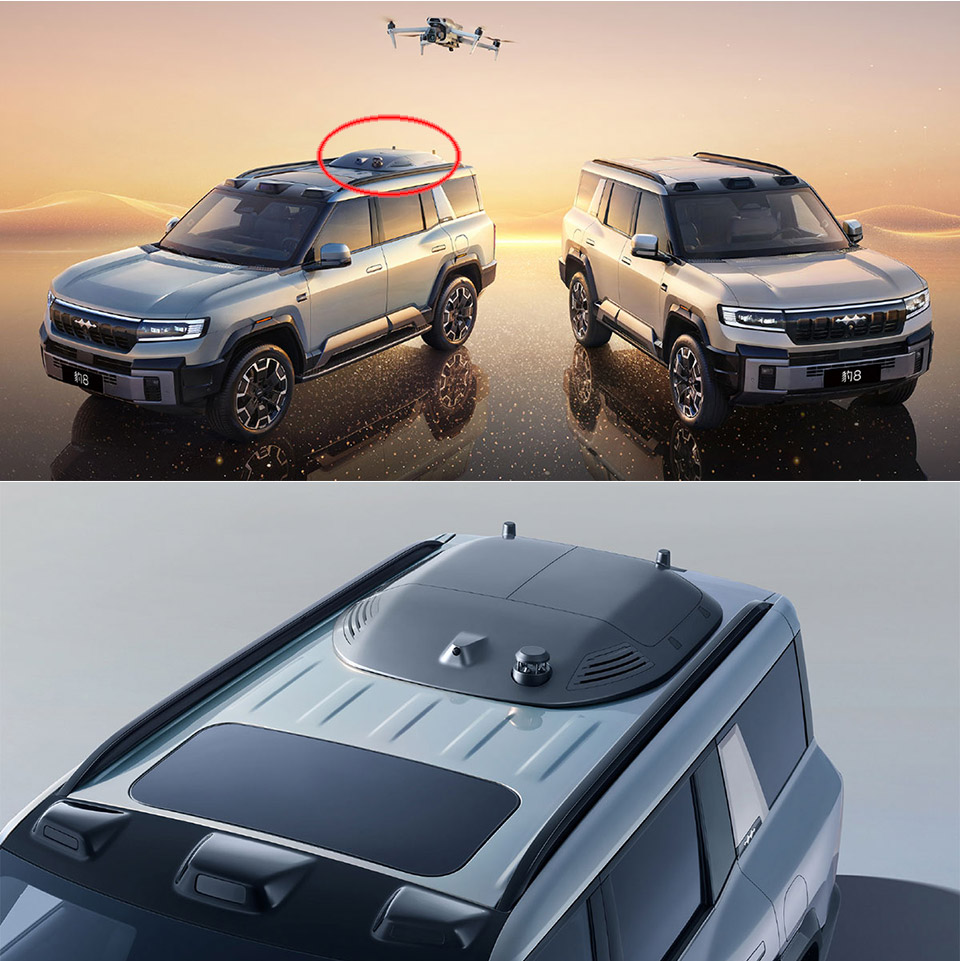
The system is only available in China, and costs 16,000 yuan (or about $2,197).
This integration transforms vehicles into mobile aerial platforms, offering a novel blend of mobility and aerial capabilities.
Key Features of the Lingyuan System
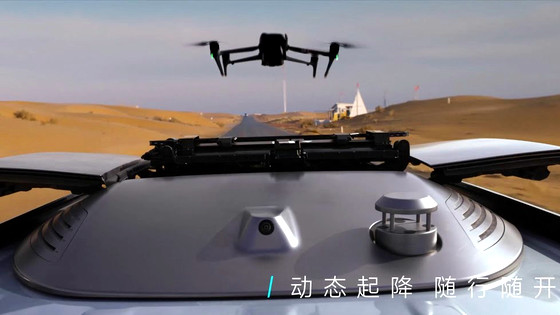
Integrated Drone Hangar: The system features a retractable rooftop hangar, allowing the drone to autonomously take off, land, and recharge while the vehicle is in motion.
Dynamic Operation: Supports drone takeoff and landing at vehicle speeds up to 25 km/h (15.5 mph). The drone can follow the vehicle at speeds up to 54 km/h (33.5 mph) and has automatic return functionality within a 2 km range.
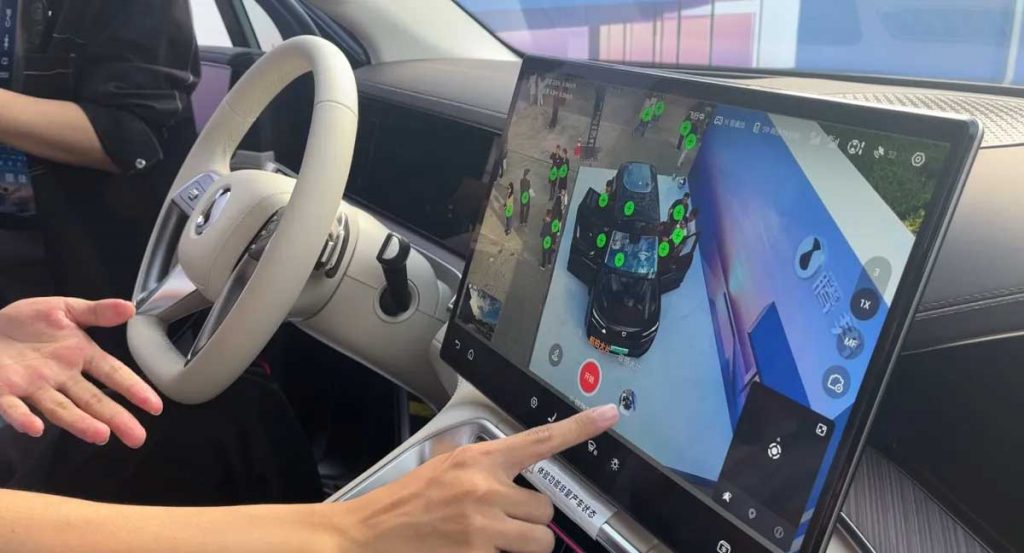
Comprehensive Package: Includes a DJI drone (likely the DJI Air 3S), a rooftop hangar, positioning modules, and applications for AI recognition, video editing, and music integration.
Battery Management: The docking station recharges the drone from 20% to 80% in approximately 30 minutes.
Flying a Drone While Driving a Car—What Could Possibly Go Wrong?
Just because you can, doesn’t mean you should:
The Lingyuan system promises an exciting fusion of mobility and aerial technology, but incorporating drone operation into everyday driving is, quite frankly, a recipe for disaster.
Driver Distraction:
First and foremost, driver distraction is a significant concern. Distracted driving already account for thousands of fatalities each year, and the added cognitive load of operating or monitoring a drone while driving will only heighten the risk.
Even if automation reduces the need for direct input, the temptation to interact with the drone remains—especially considering that the Lingyuan system allows drones to take off and land while the vehicle is moving at speeds of up to 25 km/h.
Legal Requirements:
Legal obstacles further complicate matters. Many countries have strict regulations against operating drones over moving vehicles—and for good reasons. In the event of signal loss or equipment failure, a drone can become a serious hazard to pedestrians and other motorists, including the drone operator.
In many countries, maintaining visual line-of-sight (VLOS) is a legal requirement, enforced by aviation authorities to ensure safe drone operation. This fundamental safety measure helps protect people, property, and airspace integrity. By mandating that drones remain within sight, VLOS regulations require operators to maintain full control at all times —adding yet another layer of complexity to an already precarious setup.
Technical Failures:
Finally, technical failures pose a real threat. Drones are susceptible to signal interference, extreme weather, and mechanical malfunctions. A drone malfunctioning over a highway could have catastrophic consequences, especially given that even small drones have been shown to cause severe damage upon collision with vehicles or aircraft.
In short, while the Lingyuan system may be an impressive technological feat, its practicality—and safety—on the road remains highly questionable.
Applications and Use Cases
According to BYD, the Lingyuan system enhances the driving experience by allowing users to capture cinematic road trip footage, monitor traffic conditions, and assist in emergencies with real-time aerial views. BYD Chairman Wang Chuanfu highlighted this innovation as a reimagining of vehicle design, merging mobility with aerial capabilities.
However, while the concept sounds impressive, it’s hard to shake the feeling that they really haven’t fully thought this through.
Related article: Taking Flight: How Haikou’s Drones Are Transforming Duty-Free Logistics
